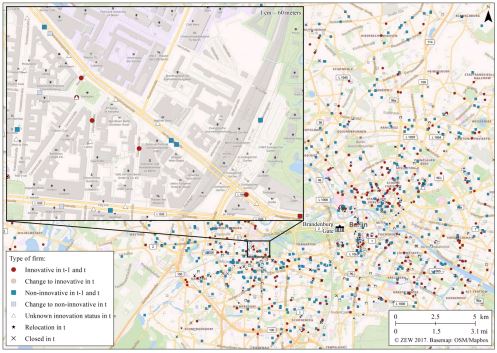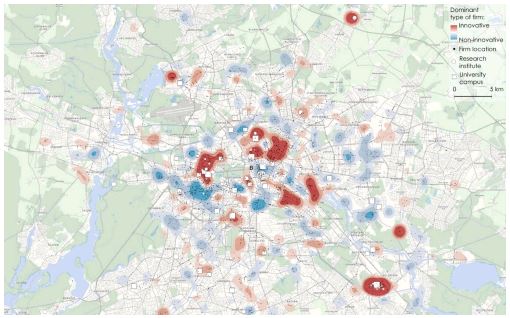Urban Innovation Hotspots: How innovative firms locate within cities
Blog by Christian Rammer, Jan Kinne and Knut Blind
- Created
- 5 Mar 2019, 10:19 a.m.
- Author
- Christian Rammer, Jan Kinne, Knut Blind
- DOI
- 10.1177/0042098018820241
Abstract: https://journals.sagepub.com/doi/full/10.1177/0042098018820241#abstract
Knowledge spillovers are an important driver of innovation in firms. A close proximity to external knowledge sources, like universities, research institutes, and firms, is likely to facilitate knowledge spillovers. Such spillovers can arise from mutual learning, informal knowledge exchange through personal contacts of workers and managers, and knowledge exchange from joint business activities along the supply chain. The high density of urban environments provide excellent hotbeds for such knowledge flows, which have been identified as one of the main drivers for the emergence of highly competitive and innovative cities. While knowledge spillovers may occur at any geographical scale, only few studies have examined the exact geographic scope of spillovers within cities.
In their article “Knowledge Proximity and Firm Innovation: A Microgeographic Analysis for Berlin” the Authors Christian Rammer and Jan Kinne of ZEW Mannheim, and Knut Blind of Technical University Berlin adapted a microgeographic view on the role of knowledge sources and the location choice of innovative firms in Berlin. Using a detailed panel dataset on the location of firms (see Figure 1), they show differences in the location choice between innovative and non-innovative firms in regard to their proximity to external knowledge sources.
Figure 1: Locations of innovative and non-innovative firms in Berlin.
In their analysis, the authors find that innovative firms locate in highly dynamic areas with high numbers of other firms, start-ups, and moving-in firms. Compared to non-innovative firms, they also locate in closer proximity to universities and research institutes. These differences decay rapidly within a few meters (50-250m), indicating a truly microgeographic scope of knowledge sources in urban environments. The diverging location choices of innovative and non-innovative firms result in the formation of intra-urban innovation hotspots and coldspots, as seen in Figure 2.
Figure 2: Innovation hotspots and coldspots in Berlin.
With their analysis, the authors shed light on the microgeographic foundations of the development of innovation in urban environments. They combine detailed firm-level data and geodata on external knowledge sources to zoom into the immediate neighborhood of firms, allowing them to assess the role of knowledge proximity at an unprecedented level of analysis.
Read the paper on Urban Studies - OnlineFirst here




Comments
You need to be logged in to make a comment. Please Login or Register
There are no comments on this resource.